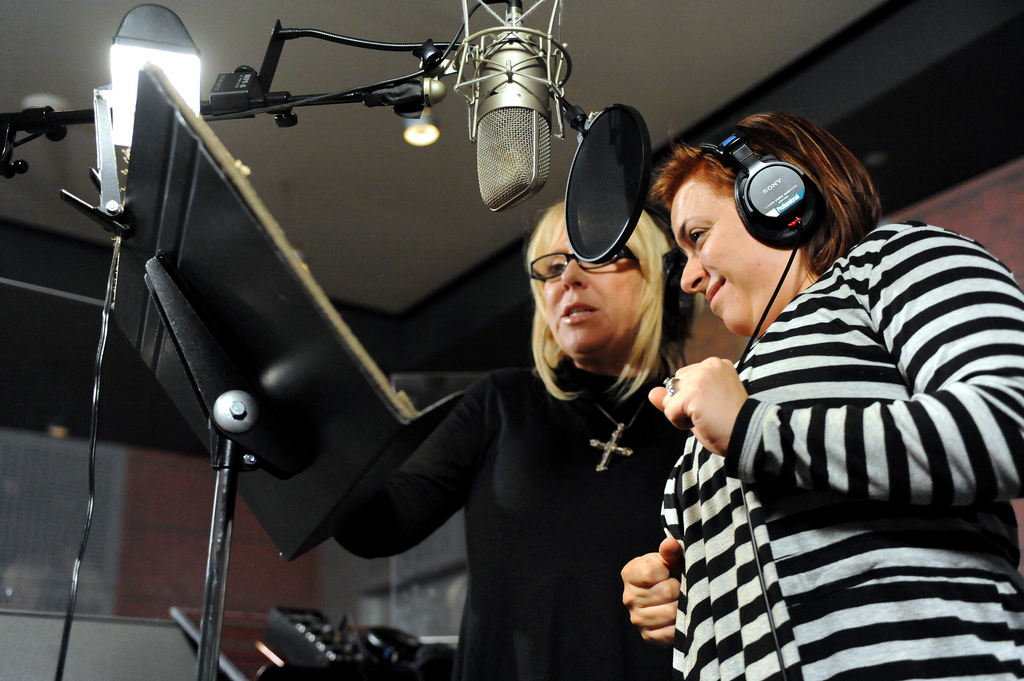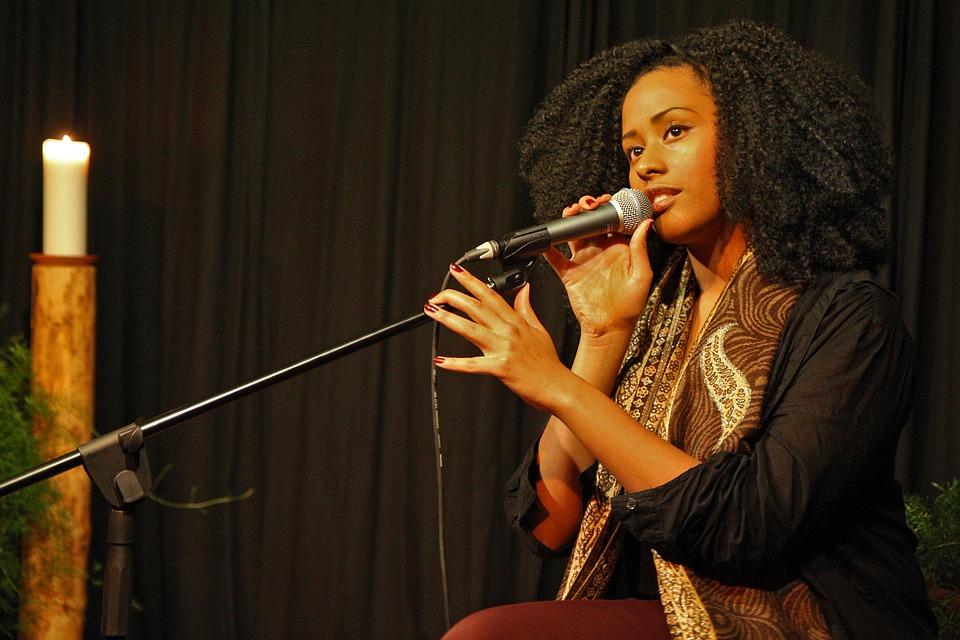THE ROLE OF THE TONGUE IN SINGING

Unleash Your Tongue For Singing
There is a Finnish saying for situations demanding intense concentration: ”Keep your tongue in the middle of your mouth”. The saying suggests that the tension of the tongue is in direct correlation with the tension of the mind. For a beginner singer, taming the tongue is often one of the most difficult tasks.
At the very beginning, the student should sing in front of a mirror and look at the tongue in action. Usually, they discover that the tongue tends to curl up into a sausage shape retracting towards the pharynx or in the middle of the oral cavity, or alternatively the tip of the tongue reaches for the palate.
If the tongue blade rises to touch the palate and the sides of the tongue touch the inside of the cheek, a vault is formed under the tongue with certain resemblance to the unusually shaped hollow hyoid bone of a howler monkey.
It can produce a loud carrying sound but the tone colour is terrible. Listeners with acute hearing will not accept it, although an average audience might possibly give the artist with a powerful voice a standing ovation.
This mistaken rendition can even be discerned from some of the latest recordings of the Maria Callas, though this does by no means detract from her greatness. By chance, I heard a concert where a powerful bass of international renown strived for more volume by shaping extra resonant vaults under his tongue.
This mistaken form in not necessarily harmful for all singers´ throats, but the howling tone is definitely not suitable for interpreting Lieder or other delicate songs. In an opera scene where there is a great deal of drama and movement, this tonal effect may be acceptable. The tongue root, the soft palate and the back wall of the pharynx form a real stumbling block for many singers.
Using The Tongue To Improve Your Singing Quality
This region is particularly active when eating and swallowing and therefore the swallowing muscles get mixed up with the production of the singing voice. The singers who misuse the swallowing muscles have a recognizably similar tone of voice. The variety of nuances is narrow and the throat runs the risk of serious injury. In swallowing, these muscles around the pharynx contract and shorten whereas in singing these muscles should be able to lengthen freely. It would be good if teachers could demonstrate this complex action by singing first in the wrong way when the pharynx is constricted and then in the right way.
This way of singing is not always perceived even by music reviewers. The well resonant and healthy contralto or mezzo-soprano voice is sometimes confused with this unhealthy way of constricted muscles. It is a matter of concern to see singers with this style granted a contract with an opera house or a singing teacher´s post at a music academy. Some singers, however, seem to possess such a strongly built throat that even this mistaken way of singing does not damage it completely. Neither do lower voice categories suffer so much as the higher ones, but it is more easily audible and recognizable in the medium and low voice categories.
I have met with this kind of case now and then, and found that it has been almost impossible to get rid of, especially when dysfunction of the tongue muscles has become habitual. It was surprising to note that most of these singers could not roll their tongue into a tube.
This quality is said to be genetic (Sturtevant 1940, and others) in that the majority of people can roll or can learn to roll their tongue, others cannot. It made me wonder whether there could be other hereditary restrictive factors involved in the functioning of tongue muscles because the wrong way of constricting the muscles in the tongue root /pharynx region seemed to be an insurmountable handicap for some singers.
The shot put Olympic champion, Sydney 2000, Arsi Harju, said in an interview: ”If you have repeated a wrong movement one thousand times, it will take a long time to root it out, and after that, you will be no further than in square one ”. In my view, the shot put dynamics is nowhere near as complicated as that of singing. This means that the first voice teacher is the most important, and I also regard the first teacher´s task as the most difficult.
Searching for and choosing the first vocal coach is of crucial importance. Good singers or good musicians are not automatically good vocal coaches. If the teacher´s own brilliant career has ended prematurely or star pupils become shooting stars, such teachers cannot be recommended, simply on the grounds of their popularity. Returning to the role of the tongue, it should be kept separate from voice production, since its essential task is to form the sounds, the vowels, and consonants. It would be advisable to start voice exercises using vowels only.
At the same time, take care to observe tongue positions that may be caused by tensions. The tip of the tongue should remain right behind the lower front teeth and the blade should not touch the palate in order to leave the vocal tract wide-open.
The higher the note, the more liable it is that the tongue becomes narrower and retracts backwards. When consonants are added, the problem will be even more common. If the tongue cannot handle consonants, the root of the tongue tends to narrow the vocal tract. This kind of ”consonant terror” should be stopped once and for all, otherwise, the singer tries to compensate for the false action by pushing more air. The tip of the tongue should normally just pick up the required consonants by the way. Only the consonants /k/ and /g/ close the vocal tract so that the tongue blade reaches the soft palate. During the phonation of other consonants, the tongue and the palate do not touch each other. I am not in favor of voice training based on use of the /ng/ sound. It is true that the/ng/ sound helps to get the feel of pharyngeal functions, but on the other hand, it easily involves certain constriction by pharyngeal muscles, a movement a singer should definitely avoid.
The root of the tongue and the pharynx should be free of constrictions. If singing does not run smoothly, you can mostly suspect tensions in the tongue root region. Try first singing with vowels only. You will see how the tip of the tongue is active during the phonation of front vowels, the blade becomes active especially with the /a/ vowel (Schlafe, father) and finally, the to root takes care of the back vowels.
When your tongue is practiced at handling vowels without extra tension, then you can include the consonants in the game. One very common mistake related to the tongue is to try to substitute the root muscles for the extrinsic muscles that draw the larynx downwards.
Consequently, the muscles of the bottom of the mouth become tense and the space between the hyoid bone and the thyroid cartilage disappears.
Some singers open their jaw to the utmost with the result a longitudinal furrow can be seen in the tongue, it will narrow and stiffen, and the juiciest timbre will disappear especially in the higher range. This mode is easy to observe with a mirror. I have heard the argument that teaching to understand the functions of the tongue should not be done at all.
The movement of the tongue should rather be allowed to proceed spontaneously. No doubt, it is a common aim, but if the student is not aware of the reflex-like extra tensions of the tongue, they will not disappear by themselves.



